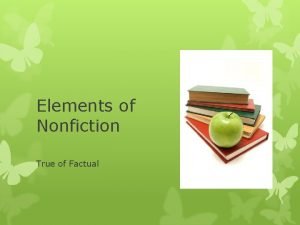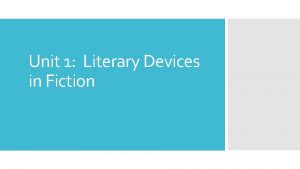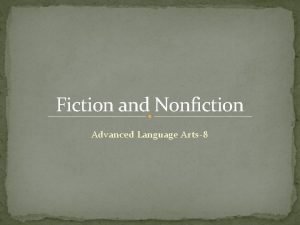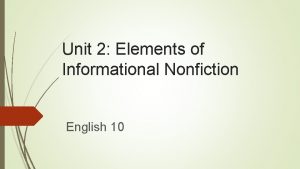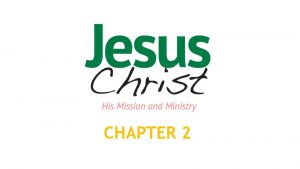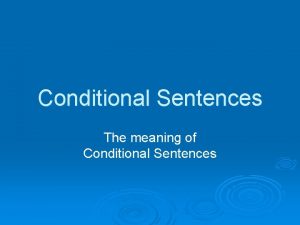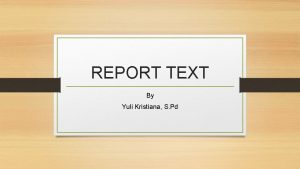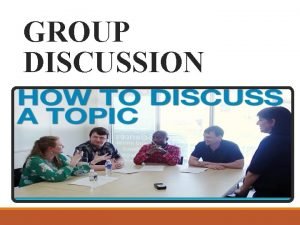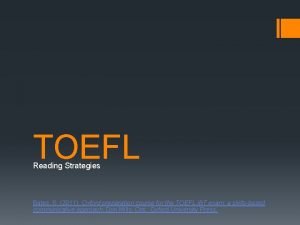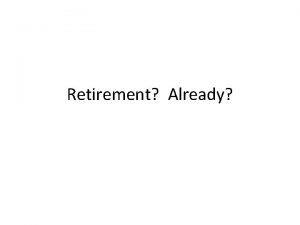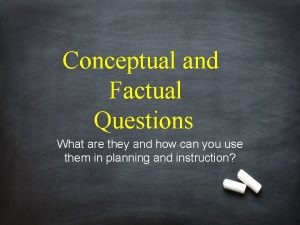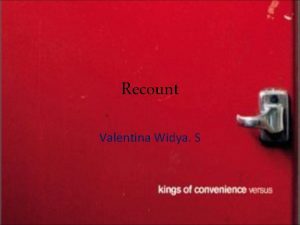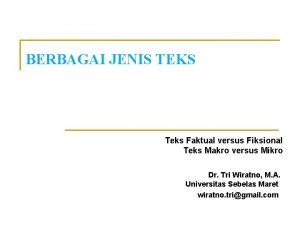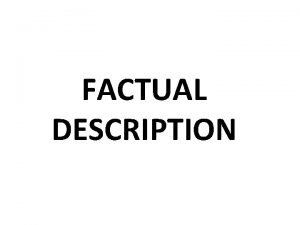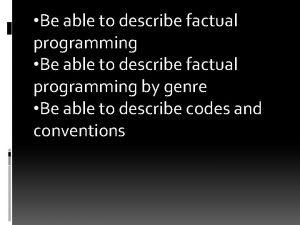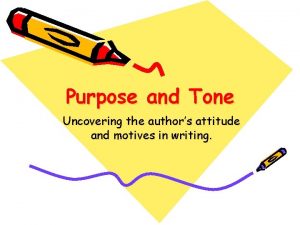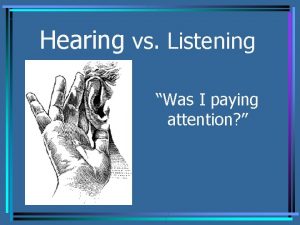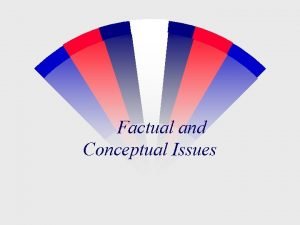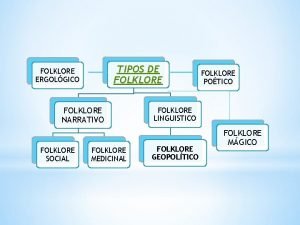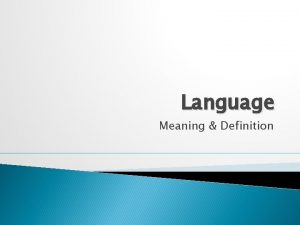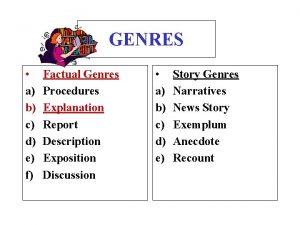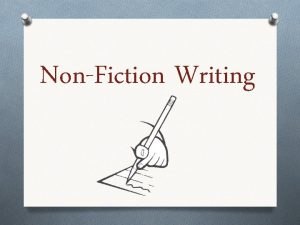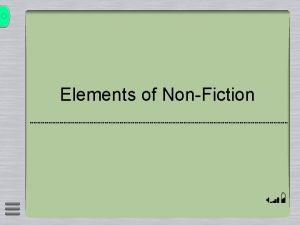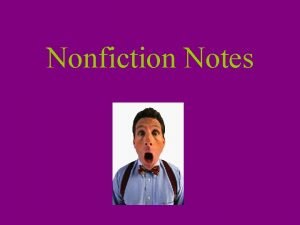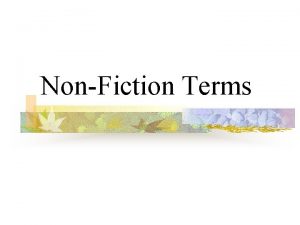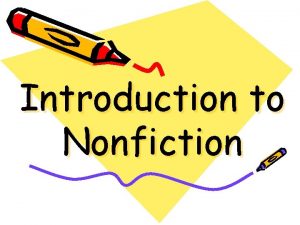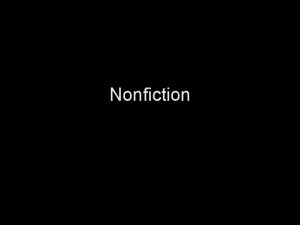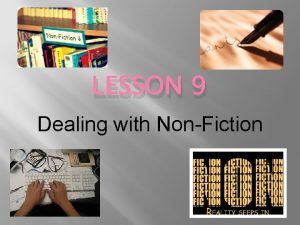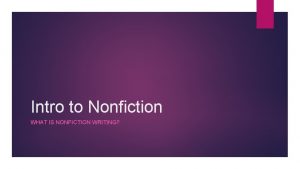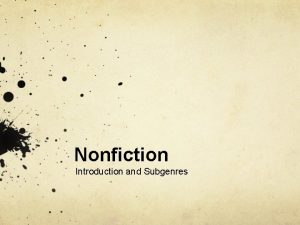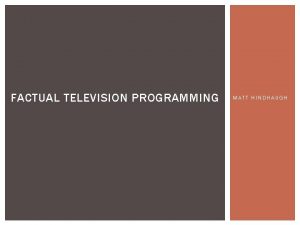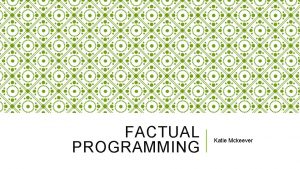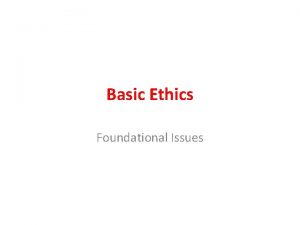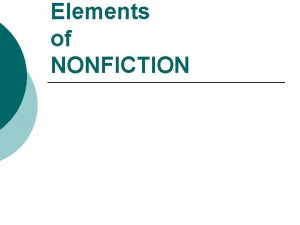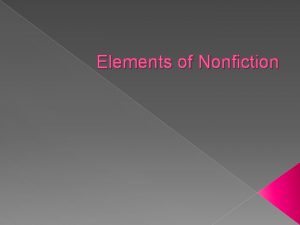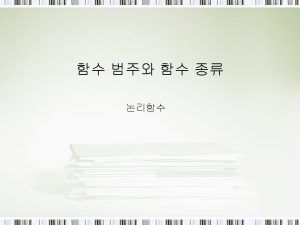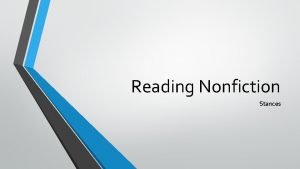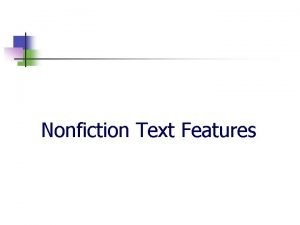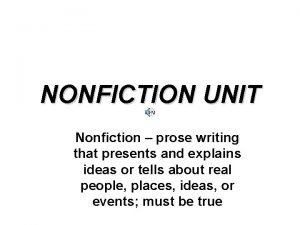Elements of Nonfiction True of Factual What is





























- Slides: 29

Elements of Nonfiction True of Factual

What is Nonfiction? Nonfiction is a type of writing that deals with REAL people, places, and events. A newspaper article, a set of instructions, and an encyclopedia article are all forms of nonfiction. It contains factual information, but the writer can arrange the information in any way he/she chooses.

What is Nonfiction (cont. ) The subject of nonfiction is real The author writes about actual persons, places and events The writer may just report the facts The writer may also include personal opinions Often there is a mixture of facts and opinions Readers must read critically…meaning YOU have to be the judge!

What is the author’s purpose? To entertain To inform To persuade To explain

Types of Nonfiction We are going to learn about. 6 types of Nonfiction. Autobiography Biography Essay Informative Article Interview Speech

The story of a person’s life told by that person. It is written in the first person.

Continued… The word autobiography can be broken up into three parts. auto = self bio = life graph = writing

Continued… An autobiography can read just like a story. It is usually a long work that covers a long part of the writer’s life. You’ll also notice that the narrator of this story keeps using the pronouns “I” or “me”. That’s because autobiographies are written in the first person

Autobiography Story of a person’s life, written by that person. 1 st person point of view Usually book length Includes journals, diaries, letters, and memoirs

In the beginning, because I felt, as only a young girl can feel it, all the pain of being an ugly duckling. I was not only timid, I was afraid. Afraid of almost everything, I think: of mice, of the dark, of imaginary dangers, of my own inadequacy. My chief objective as a girl was to do my duty. -- Eleanor Roosevelt

What details in the paragraph help you understand what Eleanor Roosevelt felt and experienced? How is this an example of autobiography? She felt she was ugly That made her timid She was very dutiful She wanted the approval of others Uses the “I” subject pronoun!!

Examples of Autobiographies are… Journals. Diaries- Letters. Memoirs-

A biography is the story of a person’s life told by someone else. It is written in the third person. The biography of Eleanor Roosevelt is a great example!

Continued… ~ The biographer gets information by conducting interviews and reading letters and diaries. ~ biographies contain some elements of fiction, such as characters and setting. ~ The sole purpose of a biography is to present an accurate account of the subject’s life.

Biography Story of a person’s life told by someone else In 3 rd person point of view (he/she/they) The writer is called the biographer Same elements as fiction (conflict, setting, etc. )

Eleanor was born in a fine townhouse in Manhattan. Her family also owned an elegant mansion along the Hudson River, where they spent weekends and summers. As a child Eleanor went to fashionable parties. A servant took care of her and taught her to speak French. Her mother, the beautiful Anne Hall Roosevelt, wore magnificent jewels and fine clothing. Her father, Elliot Roosevelt, had his own hunting lodge and liked to sail and to play tennis and polo … The Roosevelt family, one of America’s oldest, wealthiest families, was respected and admired. -William Jay Jacobs, “Eleanor Roosevelt”

What do the details in the paragraph tell you about Eleanor Roosevelt’s life and background? How is this an example of biography? Details of her home, family, and life Written by a different person about her

An essay is a short piece of writing on a single-subject. Essays are often found in newspapers and magazines. The purpose of an essay is to share opinions, try to entertain or persuade , or describe a topic. There are three types of essays: Ø Expository Ø Persuasive Ø Personal

Expository Writing Expository writing presents or explains information.

Persuasive Writing Persuasive writing develops an argument. The writer tries to convince the reader to adopt a point of view or perspective.

Personal Essays expresses writer’s thoughts and feelings.

Informative articles provides facts about a subject. Some examples are: Newspapers Magazines Articles Textbooks Pamphlets History Books Gardening Books.

A conversation in which one person ask another person questions for the purpose of gathering information Helps interviewer keep an accurate account of a person’s life or a time in history.

Continued… The interviewer o takes notes o audio records o films … the conversation in order to keep an accurate record.

The communication or expression of thoughts in spoken words. Or a printed copy of such an address.

Speech continued… Speeches are normally given to: Convince/persuade people of the speakers opinion Inform people of a situation (or) a combination of both

When reading Nonfiction it’s important to look at the author’s TONE Tone = the writer’s attitude toward his or her subject matter. A writer’s tone may be sympathetic, it may be bitter, it may be comical, joyful, hopeful, sad, or anything the writer feels toward the subject he/she is writing about. Sometimes writers use tone to make you see their point of view or opinion on a matter.

How to read nonfiction… READ CRITICALLY! This means…. Look at the writer’s background Look at the writer’s purpose Look at the writer’s attitude (tone) Look at the writer’s audience ***Just because it is nonfiction does NOT mean there are not opinions of the author included. Think of what is there, as well as, what is missing

TIPS FOR READING NONFICTION Preview the selection (what’s in bold? What are the pictures about? Etc. ) Clarify the organization (is it chronological, sequential, cause/effect, etc? ) Summarize the main idea Separate the facts from the opinions Evaluate what you read (come up with your own opinions about the subject…you do not always have to agree with the author!)
 Writing that is true or factual.
Writing that is true or factual. Which line in the following excerpt from joseph
Which line in the following excerpt from joseph 7 elements of nonfiction
7 elements of nonfiction Elements of nonfiction
Elements of nonfiction Elements of fiction and nonfiction
Elements of fiction and nonfiction The baker heater league
The baker heater league Elements of informational text
Elements of informational text Chapter 2 jesus christ true god and true man
Chapter 2 jesus christ true god and true man 102 dr
102 dr Conditional sentences future tense
Conditional sentences future tense Karakteristik factual report text
Karakteristik factual report text Factual topics for group discussion
Factual topics for group discussion 6075 meaning
6075 meaning Toefl reading strategies
Toefl reading strategies Factual
Factual What is factual questions
What is factual questions What is the social function of the personal recount text?
What is the social function of the personal recount text? Contoh teks makro dan mikro
Contoh teks makro dan mikro A fact is something that is
A fact is something that is Queen elizabeth
Queen elizabeth Factual knowledge in position paper
Factual knowledge in position paper Factual programming
Factual programming Authors purpose and tone
Authors purpose and tone Factual distractions
Factual distractions Application issue ethics
Application issue ethics Give me example of
Give me example of Folklore linguistico ejemplos
Folklore linguistico ejemplos Ordinary language definition
Ordinary language definition Factual genres
Factual genres Factual questions
Factual questions
